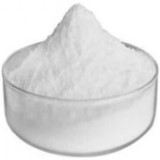|
||
|
Acetic Acid Glacial & Solution ---- Boric Acid ---- Formaldehyde Solution ---- Fumaric Acid ---- Lactobionic Acid ---- Maleic Acid ---- Malic Acid ---- Oleic Acid ---- Phosphoric Acid ---- Phosphorous Acid ---- Phthalic Acid ---- Picolinic Acid ---- Picric Acid ---- Pidolic Acid ---- Propionic Acid ---- Pyruvic Acid ---- Salicylic Acid ---- Selenious Acid ---- Sorbic Acid ---- Stearic Acid ---- Succinic Acid ---- Sulfamic Acid ---- Tartaric Acid ---- Undecylenic Acid |
||
Salicylic Acid or 2-Hydroxybenzoic Acid or 2-Hydroxybenzenecarboxylic Acid SDS MSDS of Manufacturers & Exporters
Salicylic Acid or 2-Hydroxybenzoic Acid or 2-Hydroxybenzenecarboxylic acid SDS, Safety Data Sheet 1. Product Identification Product Name & Other Names: Salicylic Acid or 2-Hydroxybenzoic Acid or 2-Hydroxybenzenecarboxylic acid. 2. Hazards Identification GHS, Globally Harmonized System Classification in accordance with 29 CFR 1910 Acute toxicity, Oral Category 4 - H302 Labeling according to GHS USA & Regulation (EC) No 1272/2008
Signal Words: Danger Hazard Statements: Precautionary Statements: 3. Composition/Information on Ingredients Product Name & Other Names: Salicylic Acid or 2-Hydroxybenzoic Acid or 2-Hydroxybenzenecarboxylic acid. 4. First Aid Measures Always seek medical attention after first aid measures are provided. Inhalation: Remove affected person to fresh air; if normal breathing has not returned within a few minutes after exposure, get medical attention. 5. Fire Fighting Measures General Hazards: Contact with eyes causes immediate severe irritation of the eye and eyelids. Product will burn at high temperature. 6. Accidental Release Measures Personal precautions, protective equipment, and emergency procedures: Avoid breathing dust/fumes/gas/mist/vapors/spray. Use individual protective equipment (waterproof boots, suitable protective clothing, safety glasses, etc.). Do not approach, facing the wind. 7. Handling and Storage Precautions for safe handling: Apply according to good manufacturing and industrial hygiene practices. Ensure proper ventilation. Wash thoroughly after handling. Do not drink, eat, or smoke while handling. Avoid contact with skin, eyes, and clothing. Minimize dust generation. Avoid breathing dust/fumes/gas/mist/vapors/spray. Keep container tightly closed. Avoid ingestion and inhalation. Use individual protective equipment (waterproof boots, suitable protective clothing, safety glasses, etc.). 8. Exposure Controls/Personal Protection Exposure Guidelines: OSHA PEL TWA 15 mg/m3 Total Dust. 9. Physical and Chemical Properties Appearance: White or almost white, crystalline powder or white or colorless, acicular crystals. 10. Stability and Reactivity Stability: Stable at normal temperatures and operating conditions. Sensitivity to light. Sublimable. 11. Toxicological Information LD50 Oral Rat: 891 mg/kg. 12. Ecological Information Toxicity to fish: flow-through test LC50 - Pimephales promelas (fathead minnow) - 1.370 mg/l - 96 hours. 13. Disposal Considerations Dispose of in accordance with Local, State, and Federal Regulations. Consult local, state, or Federal Environmental Protection Agency before disposing of any chemicals. 14. Transport Information Land transport DOT USA, TDG Canada & ADR/RID Europe: Not controlled. 15. Regulatory Information USA: Section 16 - Additional Information DISCLAIMER: The information and recommendations set forth herein are presented in good faith and believed correct as of the date hereof. It is compiled from various sources, and it is not necessarily all inclusive nor fully adequate in every circumstance. In addition, these suggestions should not be confused with nor followed in violation of applicable laws, regulations, rules, or insurance requirements applicable. This SDS MSDS sheet is intended only as a guide to the appropriate precautionary handling of the material by a professionally trained person using this product. Individuals receiving the information must exercise their independent judgment in determining its appropriateness for a particular purpose. This shall not constitute a guarantee for any specific product features and shall not establish a legally valid contractual relationship. In no case shall our company be liable to loss or damages by the product user. |
Crystal Clear Products and the group companies are manufacturing chemicals since several decades. We have automatic vacuum operated titanium evaporators and SS316 equipments to produce top grade of chemical products. We have toll manufacturers and representatives in China, UAE, Europe, Canada & USA and agents & customers in all countries like USA, Canada, Europe, UAE, South Africa, Tanzania, Kenya, Egypt, Nigeria, Uganda, Turkey, Mexico, Brazil, Chile, Argentina, Bangkok Thailand, Kaula Lumpur Malaysia, Dubai UAE etc. & sales representative in Chicago, Houston New York & Los Angeles, USA. Associated units are FDA-GMP certified, Halal and/or Kosher certified, REACH registered, ISO-9001, ISO-22000 HACCP certified, Crisil Rated.
Contact Salicylic Acid or 2-Hydroxybenzoic Acid or 2-Hydroxybenzenecarboxylic Acid IP BP Ph Eur EP JP USP NF ACS Analytical Reagent FCC Food Grade manufacturers exporters at:

Crystal Clear Products
Plot No-C1-1031-9, GIDC Estate, Panoli, Ankleshwar, Gujarat - 393002. India
Telephone Mobile: 91-7506449333; e-mail: info@crystalclearproducts.org
e-mail: info@crystalclearproducts.org
Manufacturers, Suppliers of IP BP Ph Eur EP JP USP NF FCC Food, ACS Reagent GMP Grades of Chemicals like Salicylic Acid or 2-Hydroxybenzoic Acid or 2-Hydroxybenzenecarboxylic acid






